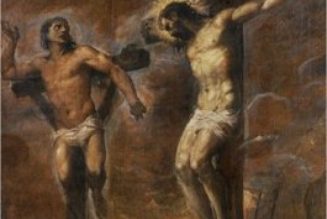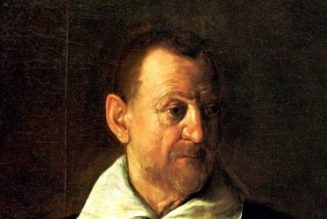Image: Vesuvius Challenge
ABSTRACT breaks down mind-bending scientific research, future tech, new discoveries, and major breakthroughs.
A 21-year-old computer scientist named Luke Farritor just became the first person in nearly 2,000 years to read words from a papyrus scroll that was buried under more than 60 feet of volcanic ash after the disastrous eruption of Mount Vesuvius in 79 CE.
Farritor used a machine learning program to pinpoint the Greek word for “purple” in one of the hundreds of carbonized scrolls that were unearthed in Herculaneum, a town that was obliterated by the eruption along with its more famous neighbor, Pompeii.
Advertisement
The scrolls were found in 1752 during excavations of an ancient villa in Herculaneum that may have belonged to Julius Caesar’s father-in-law. Excavators at that time quickly realized that the singed and fragile works disintegrated when they were unrolled, and so left most of them bound in their original form.
Farritor, who is enrolled at the University of Nebraska–Lincoln, has earned the first award ever issued as part of the Vesuvius Challenge, a competition that aims to dole out $1,000,000 in prize money to participants who can use AI, machine learning, and computer vision to identify letters and words in these unread scrolls.
By identifying the first word in the tantalizing works, he snagged the $40,000 First Letters Award. Two $10,000 prizes were also awarded to Youssef Nader, a graduate student studying biorobotics at the Free University of Berlin, who independently picked out the same word shortly after Farritor, and Casey Handmer, a physicist and entrepreneur who pioneered the techniques that led to the discovery of the word, according to a Vesuvius Challenge statement.
The Vesuvius Challenge is spearheaded by a team that includes tech investors Nat Friedman and Daniel Gross, and Brent Seales, a computer scientist at the University of Kentucky who has spent two decades developing new imaging and machine learning techniques that might virtually unravel the trove of information within these scrolls.
Advertisement
“Congratulations to 21yo computer science student [Luke Farritor] who is the first person to see this handwriting in nearly 2000 years. He has won the $40,000 First Letters prize for this world-historical achievement,” Friedman said in a post on social media platform X announcing the prize winners.
“This has been the dream of many people since the scrolls were first discovered in the 1750s. It is also the result of 20 years of work from Dr. Brent Seales and his team at EduceLab, whose years of dedicated work have made this last mile possible,” he continued.
Seales and his colleagues have released X-ray computed tomography (CT) scans of two scrolls to participants of the challenge, kicking off a race to decode the ancient texts. Many of these scrolls are expected to be works that have been lost to time, and all of them are likely to reveal new insights about life in antiquity, adding a level of intrigue and mystery to the effort.
For that reason, the project has attracted a devoted international community that trades strategies and news on Discord. Now that the first awards have been announced, these participants will race to win the $700,000 Grand Prize, which will go to whomever decodes four separate passages from the scrolls that each contain at least 140 characters of continuous text. The deadline is 11:59pm on December 31, 2023.
“Will you be the one unlocking the knowledge in hundreds of scrolls—doubling the amount of texts from antiquity—and potentially thousands more that are yet to be excavated, becoming the last hero of the Roman Empire and winning $700,000 while you’re at it?” the Vesuvius Challenge said on its website.
“The race is on.”










